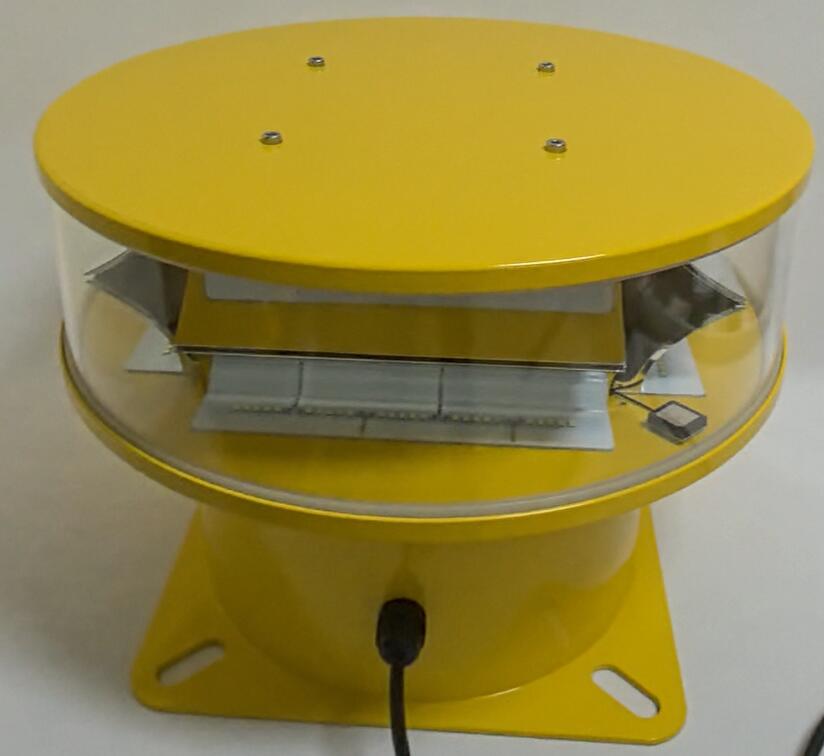Aviation Lamp for Tower: Ensuring Safety in the Skies
As telecommunication and broadcast towers continue to reach unprecedented heights, the need for reliable aviation lamp for tower systems has never been greater. These specialized warning lights serve as critical safety measures, preventing collisions between aircraft and tall structures while complying with strict aviation regulations. This article examines the latest technologies, installation best practices, and regulatory standards governing tower lighting systems.
The Critical Role of Tower Lighting
Collision Prevention
Provides 24/7 visibility for aircraft and helicopters

Essential during low-visibility conditions (fog, rain, nighttime)
Complements radar systems for comprehensive airspace safety
| Aviation Lamp for Tower |
Regulatory Compliance
Mandated by FAA (AC 70/7460) and ICAO (Annex 14) standards
Required for structures exceeding 200 feet (61 meters)
Non-compliance risks hefty fines and operational restrictions
Urban Air Mobility Support
Guides drones and eVTOL aircraft around tall structures
Adapts to evolving air traffic patterns in smart cities
| Aviation Lamp for Towers |
Modern Aviation Lamp Technologies
LED Revolution
80% more energy efficient than traditional lighting
50,000+ hour lifespan reduces maintenance needs
Instant full-intensity illumination with no warm-up
Smart Lighting Systems
Automatic brightness adjustment (day/night/weather)
Remote monitoring via IoT connectivity
Predictive maintenance alerts
Durable Construction
IP68 waterproof rating for extreme weather
Corrosion-resistant materials (316 stainless steel)
-40°C to +70°C operational range
Tower Lighting Standards & Requirements
Structure Height Light Type Visibility Requirement
<150 ft (45m) L-810 (Red, Low Intensity) 3-5 nautical miles
150-500 ft (45-152m) L-864 (Red, Medium Intensity) 5-10 nautical miles
500-700 ft (152-213m) L-865 (White, Medium Intensity) 20+ nautical miles
>700 ft (213m) L-856/L-857 (White, High Intensity) 20-50 nautical miles
Installation Best Practices
Optimal Placement
Top, midpoint, and base illumination
360° coverage with no blind spots
Proper spacing for grouped towers
Power Solutions
Grid-connected systems (most reliable)
Solar-powered options for remote locations
Battery backup for uninterrupted operation
Maintenance Protocols
Monthly visual inspections
Annual photometric testing
5-year component replacement cycle
Case Study: Major Telecom Tower Upgrade
Replaced outdated lighting with LED systems
Achieved 75% energy savings
Implemented remote monitoring capabilities
Enhanced visibility by 40%
Emerging Technologies
AI-powered predictive maintenance
LiFi-enabled data transmission
Space-aware lighting for satellite traffic
Self-cleaning nano-coatings
Cost-Benefit Analysis
LED systems offer ROI within 2-3 years
90% reduction in maintenance costs
60% lower energy consumption
Extended 10+ year lifespan
The aviation lamp for tower has evolved from a simple safety feature to a sophisticated, intelligent system that actively contributes to airspace safety. With advancements in LED technology, smart monitoring, and durable materials, modern tower lighting solutions provide unmatched reliability while reducing operational costs. As our skies become increasingly crowded with both traditional aircraft and new urban air mobility vehicles, these systems will play an even more vital role in collision prevention and safe navigation.
For tower operators, engineers, and aviation authorities, investing in compliant, high-quality aviation lighting isn't just about meeting regulations - it's about protecting lives and ensuring the safe growth of our airspace infrastructure. The future of tower lighting lies in smarter, more connected systems that can adapt to the evolving demands of modern aviation.
